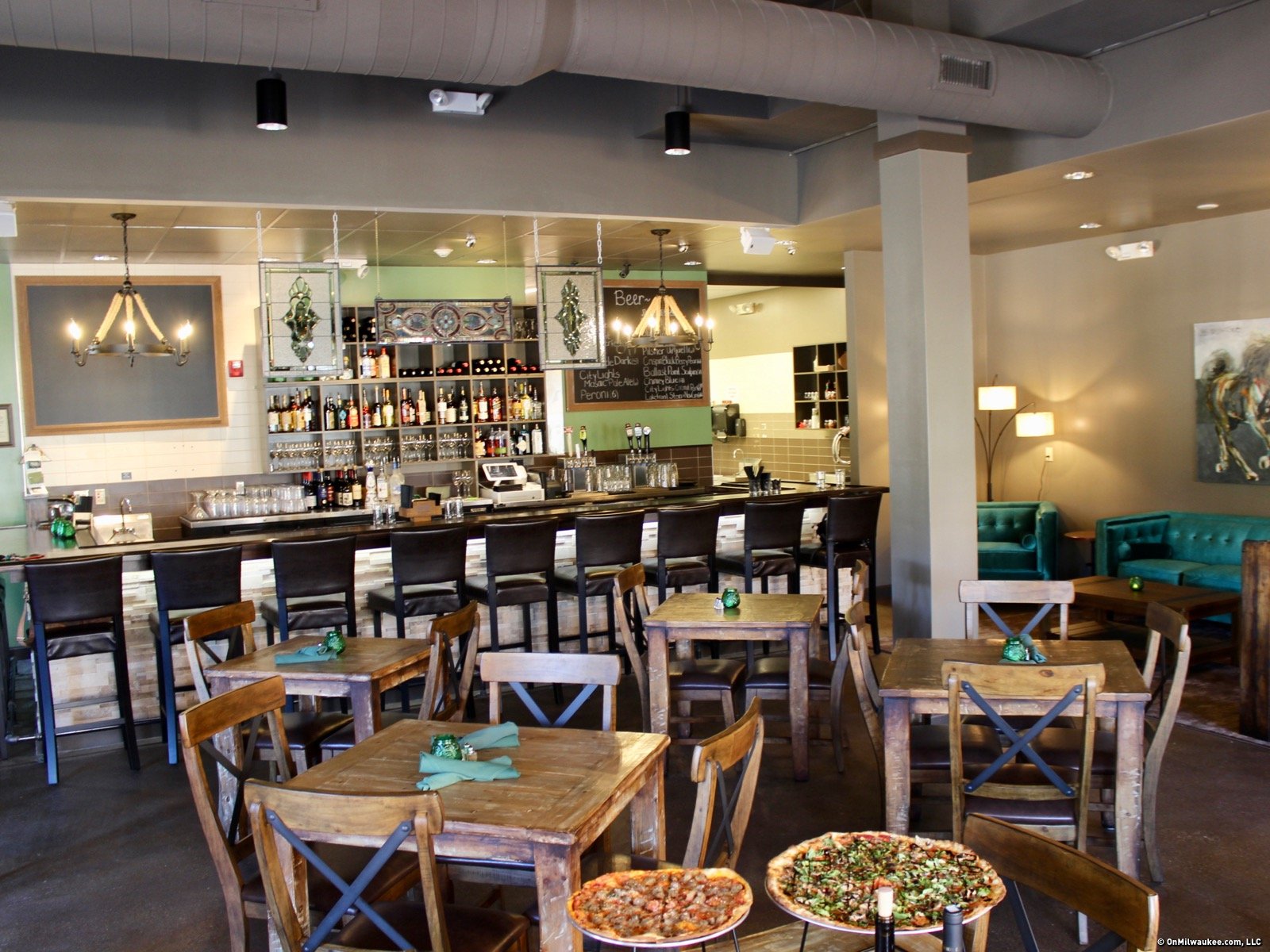There are two approaches to writing a menu that corresponds to an art exhibit at the Milwaukee Art Museum: creating food that looks like the art, or reflecting the historical context of the art within the food.
According to Micah Kaufman, executive chef at Café Calatrava, the menu for the new MAM exhibit, "Kandinsky: A Retrospective," is some of both.
"There are colors, contrasts in flavor, and stories behind the food," he says as he takes me through the new menu offerings in the café.
"Approaching a menu like this is a little intimidating," Kaufman notes. "In fact, we’ve been working on it for months, not only researching Kandinsky, but also the culture in which he created his work."
One of the dishes that shines on the new menu is the Salade Olivier ($12) – an updated take on a classic salad found frequently on menus in Moscow – with fingerling potatoes, hard-boiled egg, baby carrots, cornichons and peas dressed in a light house-made grapeseed mayonnaise studded with dill.
"We downloaded menu after menu from Moscow and Berlin," he says, "We wanted to find threads that would ring true and really answer the question: ‘What would Kandinsky eat if he were alive today?’ Thank goodness for Google Translate."
The menu, which is divided into parts – Impressions, Improvisations and Compositions – offers up a selection of small plates and appetizers, salads and sandwiches, and full-blown entrees, all of which aim to capture an aspect of the exhibit.
Roasted cauliflower with quinoa, hazelnuts, parsley, sumac and lemon oil ($8) makes nods to early Kandinsky works created during and after his travels to Tunis in North Africa. While Shchi ($6) – a Russian cabbage and vegetable soup – and stuffed cabbage with vodka tomato sauce ($13) pay homage to his homeland of Russia.
"We wanted the menu to be approachable," Kaufman says. "So there are familiar flavors. But, in many cases the plates look very different from what people may have come to expect."
The plates on the menu are, in some cases, as abstractly presented as Kandinsky’s art – with swaths of bright color appearing in smears and spatterings, and a diversity of flavors dancing in and out of harmony like a musical composition.
"His theories and his writings emphasized the emotion in artistic expression," Kaufman says. "As chefs, we have a deep commitment to our craft, much as artists do. And it’s powerful – when he talks about committing himself, fully, to his art – that’s cooking, man. That’s what we do."
The new menu belies a commitment to flavor as well as artistic expression, but it also conveys a sense of place.
"There is a story behind the ‘Shashlik’ dish," he goes on. "There is Russian borscht, pork skewers, German spaetzle and French confit."
The flavors in the dish ($13) represent the places Wassily Kandinsky resided during his lifetime – having been born in Russia and creating the bulk of his art in places like Munich and Paris.
And the plating, which makes strategic use of color and form, pays homage to Kandinsky’s work.
Jamie Nelson, sous chef, says creating menus with Kaufman is one of the best parts of her job.
"It’s great the way Micah gets me fired up about the history, the culture," she says. "Kandinsky felt that art needed to be enjoyed by all the senses… and that’s exactly the way we feel about food. It’s super exciting to play with color and abstract platings the way that we have."
The dishes are diverse, says Kaufman, reflecting the multiplicity of the clientele who visit the museum and frequent the café – everyone from children and adults, Milwaukeeans and tourists, adventurous eaters and those who simply came for the nourishment of a burger or grilled cheese sandwich.
"It’s one of the challenges we have," he explains. "Most restaurants have a demographic they can really focus upon. But, we have to have something for everyone."
The Bauhaus Brat Burger ($13) is "as German as it gets" says Kaufman. "We really wanted to capture something of his German experience and offer it up in a manner that would really resonate with the culture here in Milwaukee."
Kandinsky-inspired cookies baked in the Stone Creek Coffee Company Kitchens, featuring abstract concentric circles of color, also add a whimsical touch to the offerings at Cafe Calatrava and the Museum coffee shop.
Other dishes, like spiced salmon -- flavored with sashimi togarashi, Japanese seven spice powder, and served with fennel cashew salad atop a bed of cucumber cream – feature details like "beet paint," an accent of brightly colored borcht placed alongside the main course and interacting with the salmon and salad to form the backbone of a letter "K".
"It’s all in the details," Kaufman says with a smile.
Café Calatrava is open Monday through Sunday from 11 a.m. to 4 p.m.
"Kandinsky: A Retrospective," runs through Sept. 1. For a complete list of programs related to the exhibit, visit mam.org.
Lori is an avid cook whose accrual of condiments and spices is rivaled only by her cookbook collection. Her passion for the culinary industry was birthed while balancing A&W root beer mugs as a teenage carhop, fed by insatiable curiosity and fueled by the people whose stories entwine with each and every dish. She’s had the privilege of chronicling these tales via numerous media, including OnMilwaukee and in her book “Milwaukee Food.” Her work has garnered journalism awards from entities including the Milwaukee Press Club.
When she’s not eating, photographing food, writing or recording the FoodCrush podcast, you’ll find Lori seeking out adventures with her husband Paul, traveling, cooking, reading, learning, snuggling with her cats and looking for ways to make a difference.







